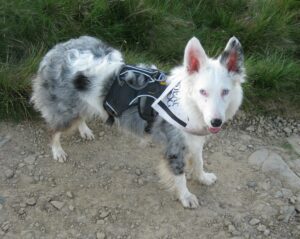Barks Blog
Pet Professional Guild Promotes Force-Free Training Methods for Hearing Impaired Dogs

Tampa, FL – In line with Deaf Dog Awareness Week taking place from 21–27 September, 2014, the Pet Professional Guild (PPG) is highlighting the message that deaf dogs respond equally as well as their hearing counterparts to force-free training.
According to the Deaf Dog Action Fund, deafness occurs in dogs for a number of reasons, including injury, old age, reactions to medications or genetics. Breeds such as Dalmatians and Boxers are more prone to deafness than other breeds, as are white dogs, although any dog can be deaf. Regardless, deaf dogs are just as intelligent and trainable as hearing dogs and can be taught sign language commands.
“Deaf dogs are in many ways the easiest dogs that I have worked (and lived) with,” said PPG Member Morag Heirs PhD. “Deaf dogs are first and foremost dogs – deafness simply means we work harder to communicate with our body language, and accept that our verbal chit-chat is irrelevant. It is incredibly important to use force-free training methods as our hands should always be signals of good stuff and great information for our dogs.”
Establishing lines of communication is crucial with deaf dogs. Heirs recommends contacting an experienced trainer as the first port of call and then starting by creating a clear signal to let the dog know when he has got something right. Signals can include a thumbs up, which can be used as a generic “good dog”; a hand flash/flicker, which can be used instead of a clicker to inform the dog he has performed the correct behavior (always followed by a reward); and a small LED torch flash, which is another useful way of ‘clicking’ the deaf dog during an activity and, if done skillfully means, the handler does not have to be beside the dog. Teaching a simple attention cue such as a tap on the shoulder is also a good idea.
“Most dogs turn when tapped (gently!) so it is easy to pair the tap with a tasty treat,” said Heirs. “This gives us a valuable method of redirecting the dog’s attention and can be helpful with frustrated barkers when we need to move them on to another activity. The next stage would often be to work on a hand target, essential for positions, recall and direction signals later on. These simple exercises begin to build a bridge of communication between handler and dog and help the dog to develop a sense of control and confidence.
“Deaf dogs participate in (and win) at almost any kind of dog sport you can name, from Rally, to Dock Diving, through Agility and into Flyball, not to mention Nosework. Other people might think of these dogs as disabled, but I can assure you they embrace life to the full without wondering about what they might be missing.”

